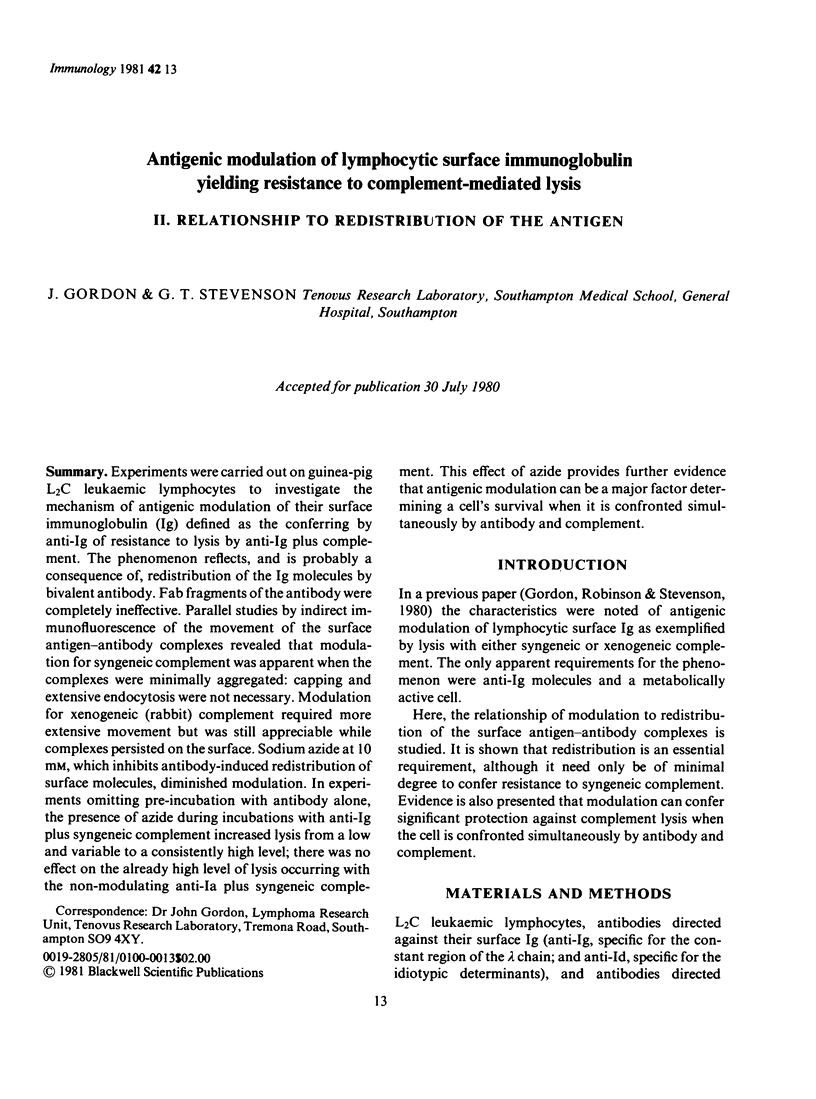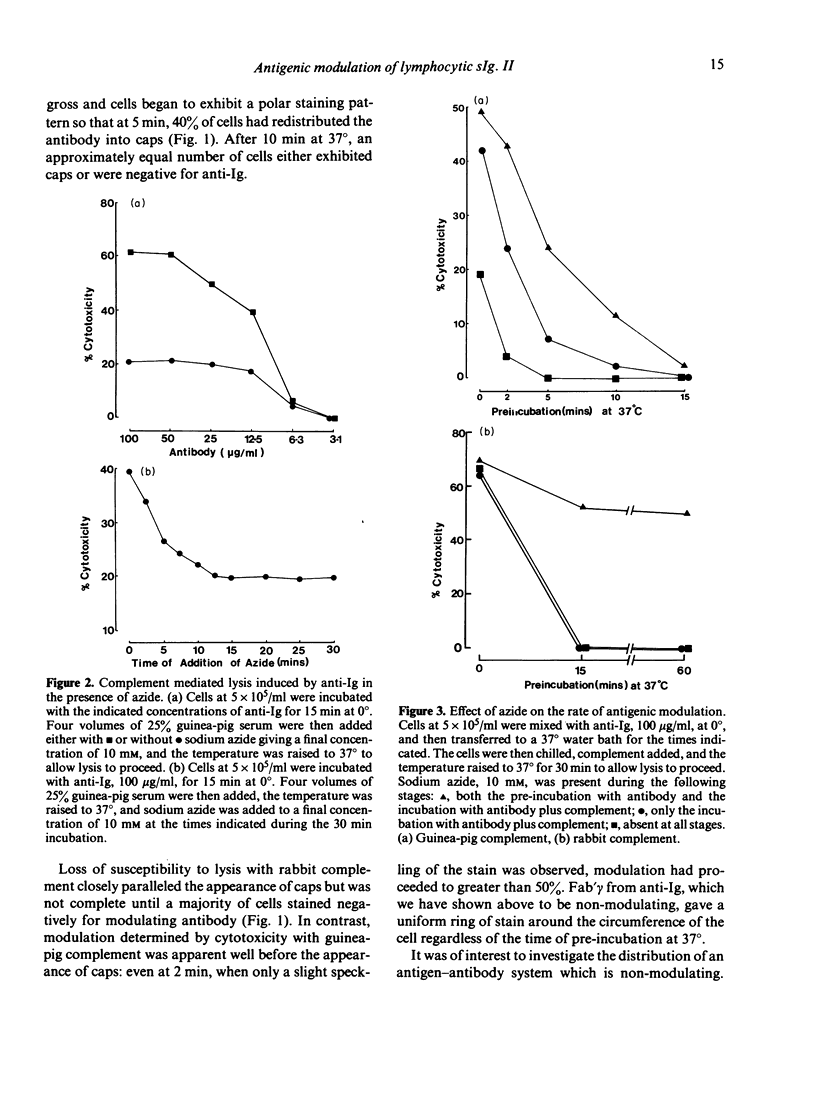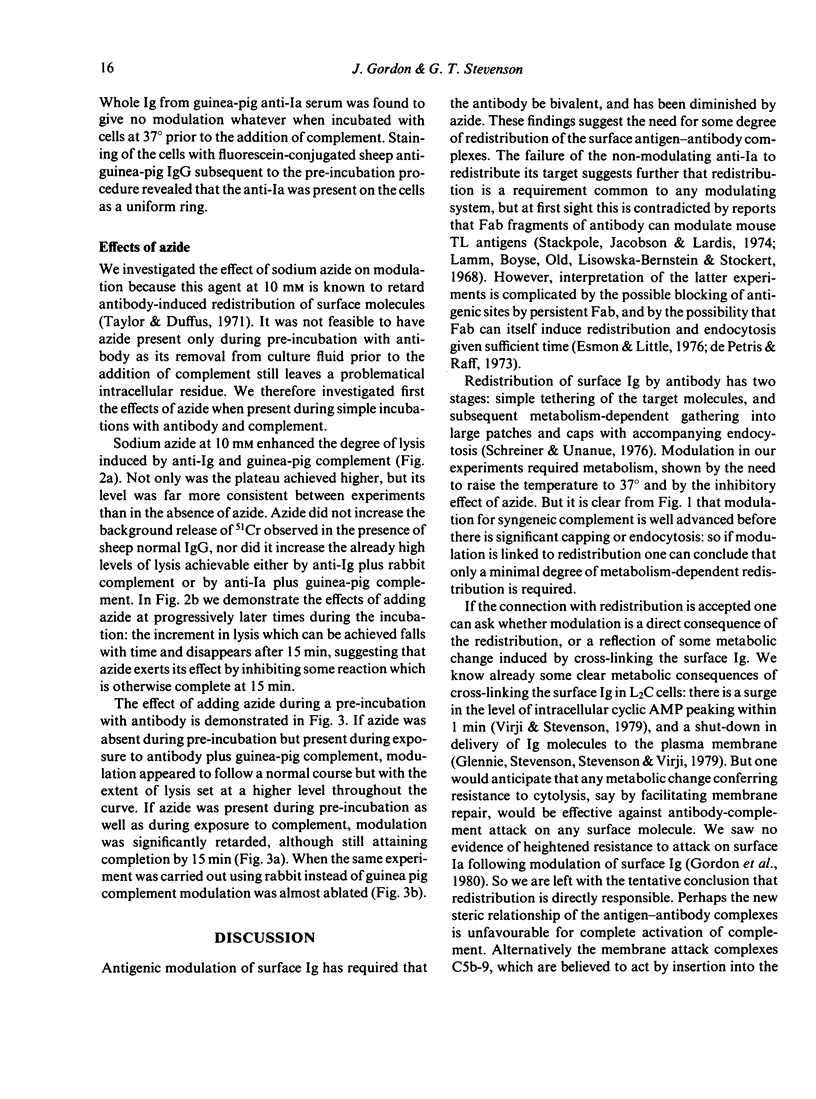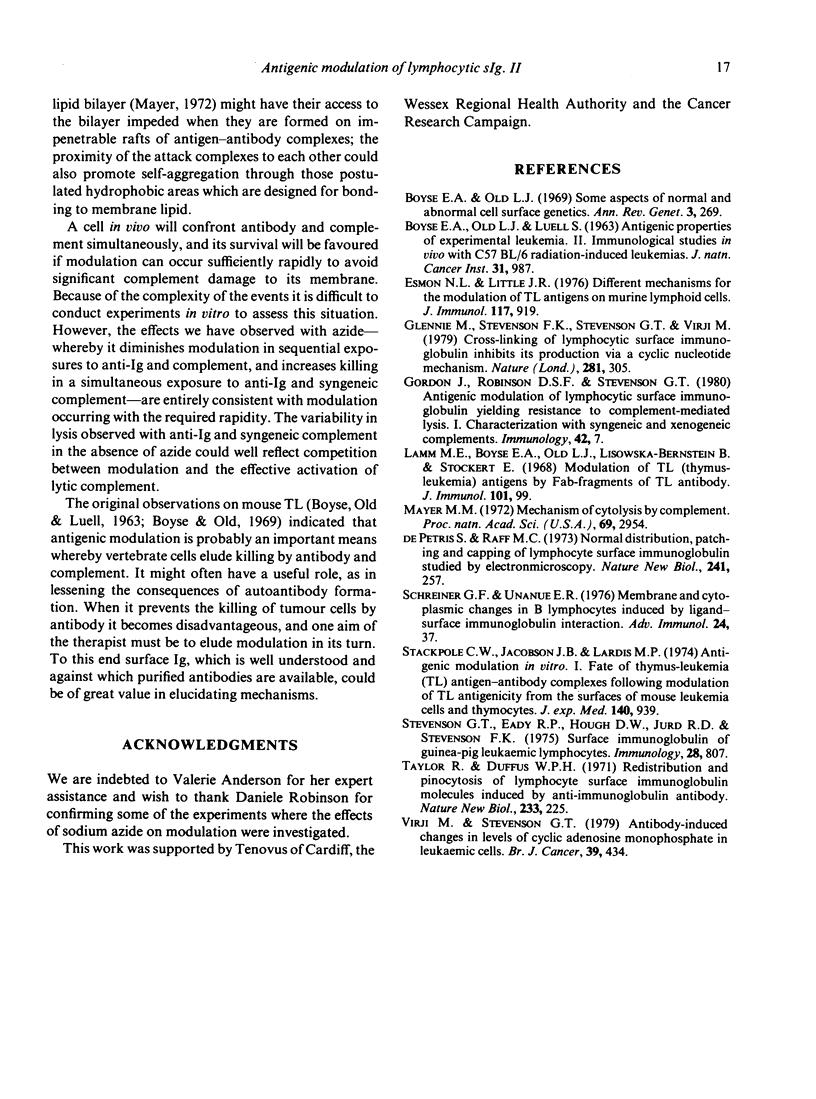Abstract
Experiments were carried out on guinea-pig L2C leukaemic lymphocytes to investigate the mechanism of antigenic modulation of their surface immunoglobulin (Ig) defined as the conferring by anti-Ig of resistance to lysis by anti-Ig plus complement. The phenomenon reflects, and is probably a consequence of, redistribution of the Ig molecules by bivalent antibody. Fab fragments of the antibody were completely ineffective. Parallel studies by indirect immunofluorescence of the movement of th surface antigen-antibody complexes revealed that modulation for syngeneic complement was apparent when the complexes were minimally aggregated: capping and extensive endocytosis were not necessary. Modulation for xenogeneic (rabbit) complement required more extensive movement but was still appreciable while complexes persisted on the surface. Sodium azide at 10 mM, which inhibits antibody-induced redistribution of surface molecules, diminished modulation. In experiments omitting pre-incubation with antibody alone, the presence of azide during incubations with anti-Ig plus syngeneic complement increased lysis from a low and variable to a consistently high level; there was no effect on the already high level of lysis occurring with the non-modulating anti-Ia plus syngeneic complement. This effect of azide provides further evidence that antigenic modulation can be a major factor determining a cell's survival when it is confronted simultaneously by antibody and complement.
Full text
PDF




Selected References
These references are in PubMed. This may not be the complete list of references from this article.
- Esmon N. L., Little J. R. Different mechanisms for the modulation of TL antigens on murine lymphoid cells. J Immunol. 1976 Sep;117(3):919–926. [PubMed] [Google Scholar]
- Glennie M., Stevenson F. K., Stevenson G. T., Virji M. Cross-linking of lymphocytic surface immunoglobulin inhibits its production via a cyclic nucleotide mechanism. Nature. 1979 Sep 27;281(5729):305–307. doi: 10.1038/281305a0. [DOI] [PubMed] [Google Scholar]
- Lamm M. E., Boyse E. A., Old L. J., Lisowska-Bernstein B., Stockert E. Modulation of TL (thymus-leukemia) antigens by Fab-fragments of TL antibody. J Immunol. 1968 Jul;101(1):99–103. [PubMed] [Google Scholar]
- Mayer M. M. Mechanism of cytolysis by complement. Proc Natl Acad Sci U S A. 1972 Oct;69(10):2954–2958. doi: 10.1073/pnas.69.10.2954. [DOI] [PMC free article] [PubMed] [Google Scholar]
- Schreiner G. F., Unanue E. R. Membrane and cytoplasmic changes in B lymphocytes induced by ligand-surface immunoglobulin interaction. Adv Immunol. 1976;24:37–165. doi: 10.1016/s0065-2776(08)60329-6. [DOI] [PubMed] [Google Scholar]
- Stackpole C. W., Jacobson J. B., Lardis M. P. Antigenic modulation in vitro. I. Fate of thymus-leukemia (TL) antigen-antibody complexes following modulation of TL antigenicity from the surfaces of mouse leukemia cells and thymocytes. J Exp Med. 1974 Oct 1;140(4):939–953. doi: 10.1084/jem.140.4.939. [DOI] [PMC free article] [PubMed] [Google Scholar]
- Stevenson G. T., Eady R. P., Hough D. W., Jurd R. D., Stevenson F. K. Surface immunoglobulin of guinea-pig leukaemic lymphocytes. Immunology. 1975 May;28(5):807–820. [PMC free article] [PubMed] [Google Scholar]
- Virji M., Stevenson G. T. Antibody-induced changes in levels of cyclic adenosine monophosphate in leukaemic lymphocytes. Br J Cancer. 1979 Apr;39(4):434–440. doi: 10.1038/bjc.1979.77. [DOI] [PMC free article] [PubMed] [Google Scholar]
- de Petris S., Raff M. C. Normal distribution, patching and capping of lymphocyte surface immunoglobulin studied by electron microscopy. Nat New Biol. 1973 Feb 28;241(113):257–259. doi: 10.1038/newbio241257a0. [DOI] [PubMed] [Google Scholar]


